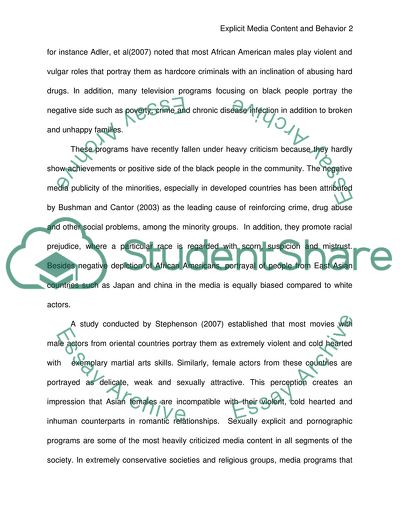Cite this document
(Explicit Media Content and Behavior Literature review Example | Topics and Well Written Essays - 1250 words, n.d.)
Explicit Media Content and Behavior Literature review Example | Topics and Well Written Essays - 1250 words. https://studentshare.org/media/1756064-discuss-the-ways-children-and-adults-may-respond-to-media-content-that-contains-explicit-material
Explicit Media Content and Behavior Literature review Example | Topics and Well Written Essays - 1250 words. https://studentshare.org/media/1756064-discuss-the-ways-children-and-adults-may-respond-to-media-content-that-contains-explicit-material
(Explicit Media Content and Behavior Literature Review Example | Topics and Well Written Essays - 1250 Words)
Explicit Media Content and Behavior Literature Review Example | Topics and Well Written Essays - 1250 Words. https://studentshare.org/media/1756064-discuss-the-ways-children-and-adults-may-respond-to-media-content-that-contains-explicit-material.
Explicit Media Content and Behavior Literature Review Example | Topics and Well Written Essays - 1250 Words. https://studentshare.org/media/1756064-discuss-the-ways-children-and-adults-may-respond-to-media-content-that-contains-explicit-material.
“Explicit Media Content and Behavior Literature Review Example | Topics and Well Written Essays - 1250 Words”. https://studentshare.org/media/1756064-discuss-the-ways-children-and-adults-may-respond-to-media-content-that-contains-explicit-material.


